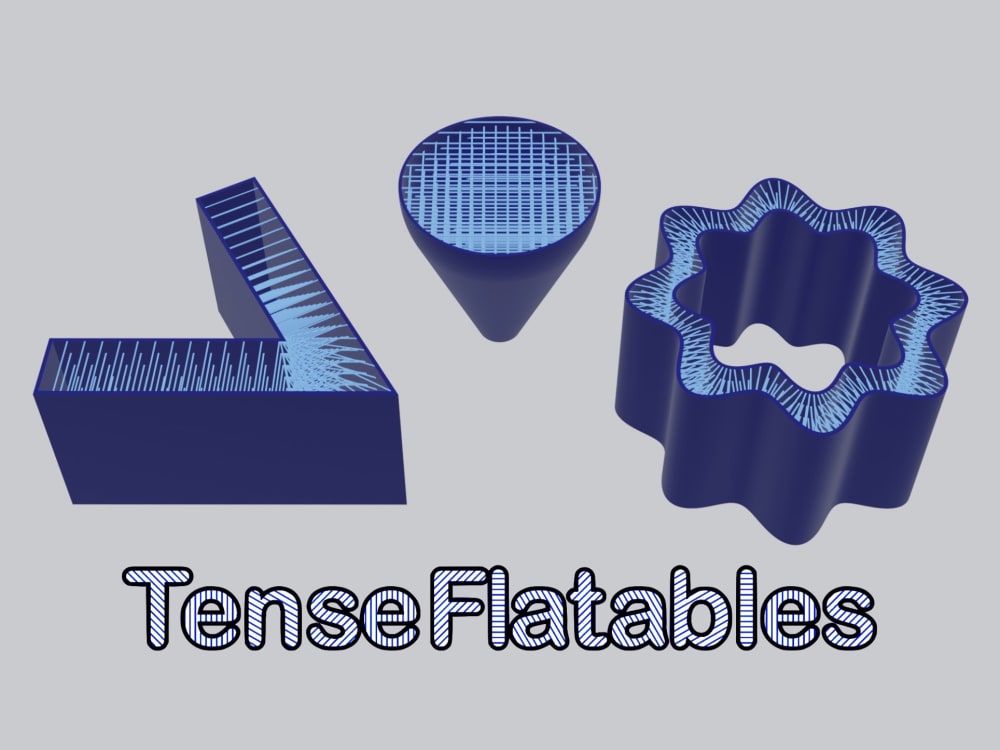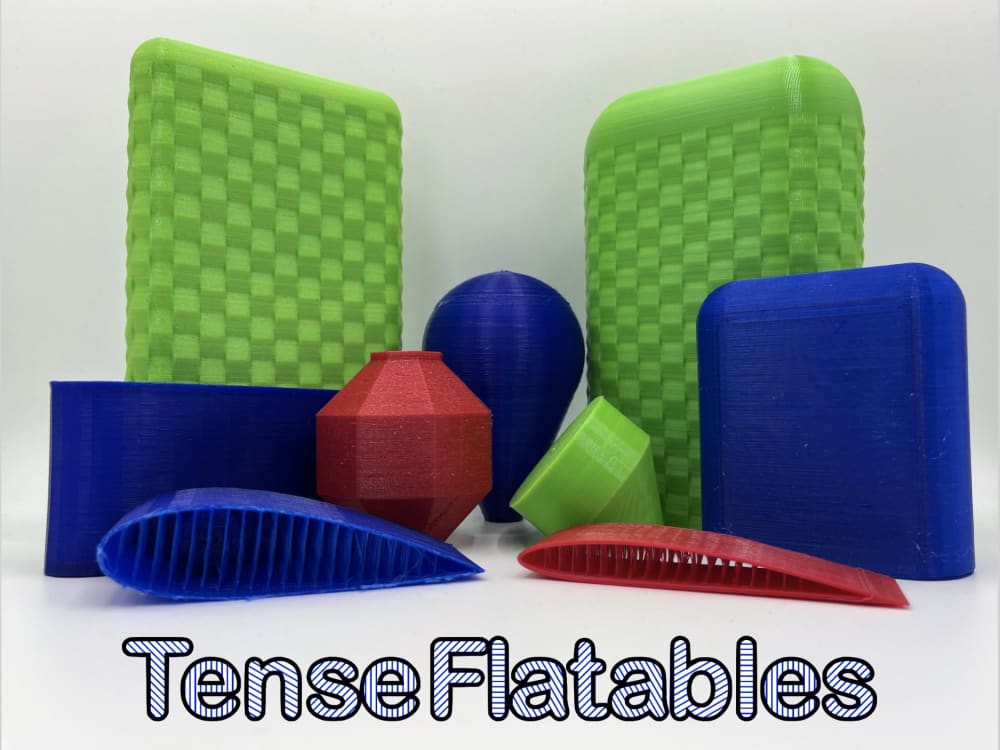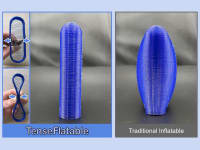

Keeping structures lightweight without adversely affecting their functionality is a major engineering challenge. Inflatables—structures that gain their load-carrying capabilities from pressurized air within a tensioned hyperelastic skin—offer a unique solution to this problem. However, although lightweight, inflatables are rarely used for engineering applications because of their inability to meet tight dimensional tolerances or sharp edged design features. Furthermore, current fabrication methods limit inflatable designs to simple, rounded geometries and do not allow the creation of inflatables with complex topological features. The current fabrication method of fusing 2D patterns to achieve 3D post-inflation shapes precludes the fabrication of inflatables with complex post-inflation shapes. Additionally, current inflatables lack the mechanical stiffness requisite for engineering applications.
Our product—TenseFlatables—solves both these issues while simultaneously simplifying the overall design and fabrication process. Each TenseFlatable has two important components: an external geometry that can be customized by the user and an internal tensegrity architecture that allows the TenseFlatable to achieve high dimensional tolerances while improving its overall load-bearing capabilities. As with traditional inflatables, TenseFlatables can be easily deflated and stowed.
TenseFlatables are manufactured using our patent-pending method, which uses an extrusion-based additive manufacturing technique to fabricate the flexible, airtight hyperelastic skin and the internal tensegrity mesh within a single workflow. The additive approach is significantly more efficient than the current methods that rely on form-finding complex 2D patterns before fusing them together to achieve 3D post-inflation shapes. Reliance on an additive technique allows us to customize the external shapes as well as the internal tensegrity mesh and achieve application-specific design and performance. The simplification of the design and manufacturing process makes it significantly cost and time efficient, while allowing at-scale and at-rate manufacturing of TenseFlatables via automation.
Our patent-pending fabrication method, assisted by a bespoke slicing software, enables us to control every aspect of the TenseFlatable design, including the outer skin thickness and the location-specific tensegrity mesh density and fiber thickness. This allows us to design TenseFlatables with an essentially unlimited degree of complexity while meeting stringent dimensional tolerances. The control over the tensegrity mesh provides us the ability to achieve location specific stiffness characteristics that can be optimized to achieve desired mechanical performance.
TenseFlatables have the potential to significantly outperform conventional inflatables in their form and functionality. The ability to create lightweight structures reliant on pressurized air can enable the design of novel multifunctional technologies for use as automotive, aircraft, and spacecraft components that help reduce fuel consumption. Their deploy-and-stow ability makes them ideal for aerospace and hypersonic deployable supports and decelerators. Further, their advanced functionality can be harnessed to improve the efficacy of biomedical procedures such as Balloon Kyphoplasty, Vertebroplasty, Rectum Balloon Implant, and to replace the subacromial balloon spacers currently used during rotator cuff repair surgery. Further, modified TenseFlatables, where air is replaced by a hydrogel that swells in reaction to stomach juices, are well suited for application as inflatable pills for cancer and infection monitoring.
Video
-
Awards
-
 2023 Manufacturing & Materials Category Winner
2023 Manufacturing & Materials Category Winner -
 2023 Top 100 Entries
2023 Top 100 Entries
Like this entry?
-
About the Entrant
- Name:William Johnston
- Type of entry:teamTeam members:
- Software used for this entry:Matlab, ideaMaker, OpenSCAD
- Patent status:pending








